(Listen to the radio version here.)
My birding friend Bruce Munson lives next door to my daughter Katherine, and we text each other whenever one of us spots a cool bird, usually in the backyard along Tischer Creek. I babysit Walter five days a week, so when Bruce or I spot something good and text about it, the other just runs to the window or backyard and can see it within moments. We also sometimes let each other know about more distant birds. Bruce was the one who messaged me about the Eastern Screech-Owl next to the McQuade boat landing last fall.
I hopped in the car and as I was pulling out of the driveway, he texted me again—birders had just found Minnesota’s first Phainopepla there, too! And Bruce stuck around to make sure I got both birds.
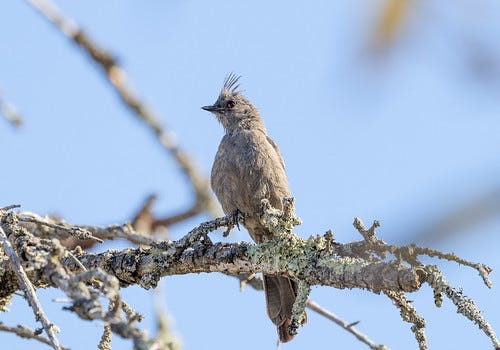
Last spring, I texted to a birding group we both belong to about a Field Sparrow in my backyard.
That was in the morning before I left for my daughter’s house to babysit. That afternoon Bruce texted about the White-winged Dove everyone was seeing in MY yard while I still happened to be 3 ½ miles away, next door to his yard.
Bruce sent me a text message on April 3 about a Yellow-rumped Warbler by the creek behind the houses—he’d first seen it the day before. I searched and searched without luck, though Bruce kept seeing it, and then he started seeing at least two visiting his suet feeder. I didn’t get a glimpse until Sunday the 9th, through my daughter’s window. Then one turned up in my own yard on Monday, and that same day I heard from fellow-Minnesotan Julie Miedke:
We just had a male Myrtle Warbler stop by!!! Too fast to grab a photo—but so excited to see. We have so much snow on the ground, but I noticed a few insects moving around.
Yellow-rumped Warblers are exceptionally hardy, nesting in the far reaches of Canada and in Alaska, and there are occasional winter records of a few as far north as Newfoundland and Alaska. The oldest banded one was still alive when it was retrapped and released at a minimum of 10 ½ years. But it still seems odd to our human sensibilities that the first yellow-rumps arrive days or even weeks before the weather seems suitable. Part of their secret is in their gut. Yellow-rumped Warblers have longer intestines than other warblers and the added ability, unique in warblers, to digest the coating on wax myrtle and bayberries. This gives them a food source well before the first tiny caterpillars hatch.
Even when hunting for insects, yellow-rumps are more versatile than their relatives, able to fly-catch and forage on all kinds of substrates, from washed-up seaweed at the beach, the surface of rivers and the ocean, spiderwebs, and piles of manure.
Back in Autumn 2014, when my mother-in-law was playing with her card club at a friend’s house in Port Wing, Wisconsin, I sat in the kitchen watching birds out the sliding glass door to the patio. I noticed one yellow-rump trying to catch cluster flies buzzing against the door on the inside, so I grabbed a flyswatter, dispatched a dozen or so, opened the door, and set them down on a window box. The moment I closed the door, the yellow-rump zipped in, gobbled them up, and gave me a hopeful look, so of course I swatted another dozen, and another. It was a most delightful afternoon.
In recent years, more and more Yellow-rumped Warblers have adopted another feeding technique, eating suet at feeding stations.
Some birders worry that yellow-rumps will grow lazy and dependent on us, but birds are far more sensible about their diets than we give them credit for. During difficult weather in spring and fall, yellow-rumps have been turning up at my suet feeders in increasing numbers, but I can watch these exact individuals fly from the suet to nearby treetops to glean insects from opening buds. I may see dozens at the feeders on cool days, but when conditions make more natural fare available, I won’t see any at all even though they’re in my neighborhood.
This year, the ethics of feeding yellow-rumps are more complicated than usual because of highly pathogenic avian influenza. Tomorrow I’ll talk about the status of the disease right now and what we should be doing to keep our birds safe.


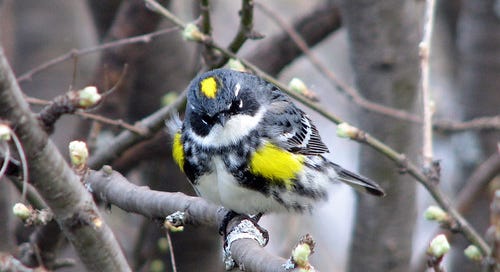



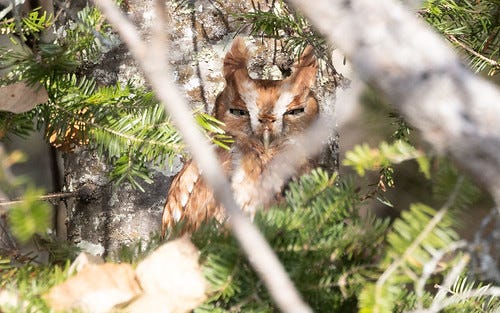
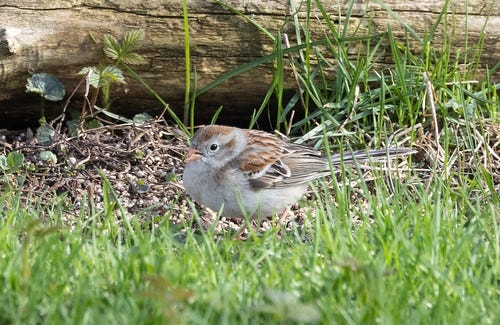
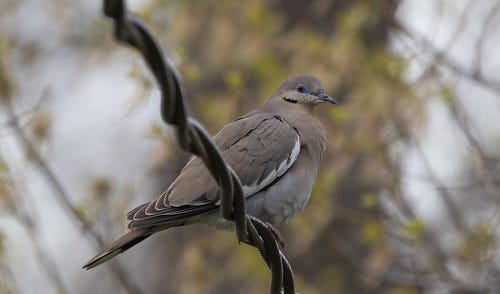
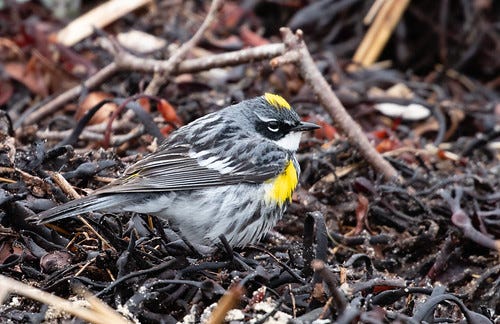
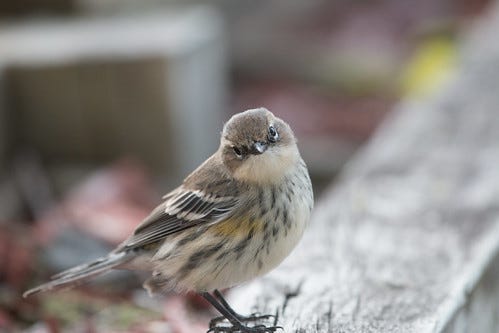
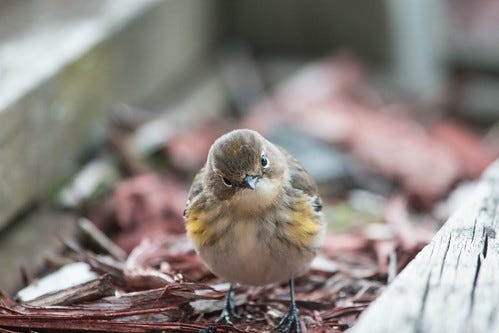
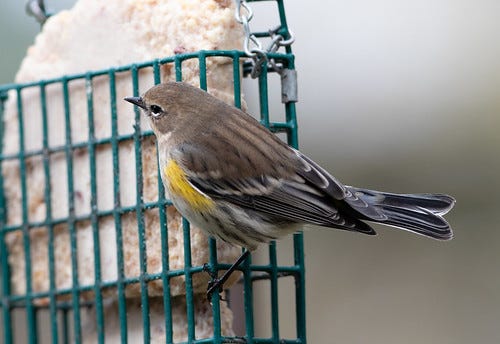
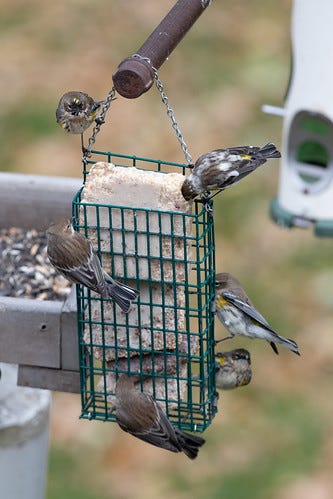

As soon as the sapsucker returns - Apr 10 this year - I can be sure to find yellow-rumped warblers visiting the sapwells in our maple trees. A truly remarkable and versatile little bird and absolutely one of my favorites. Loved the article.
I actually saw one today! I exclaimed to my friend that it was a warbler, but I had never seen one near my home before so was a little doubtful about my identification of that exact bird. But your photo was it! So cool - here in Iron River WI!